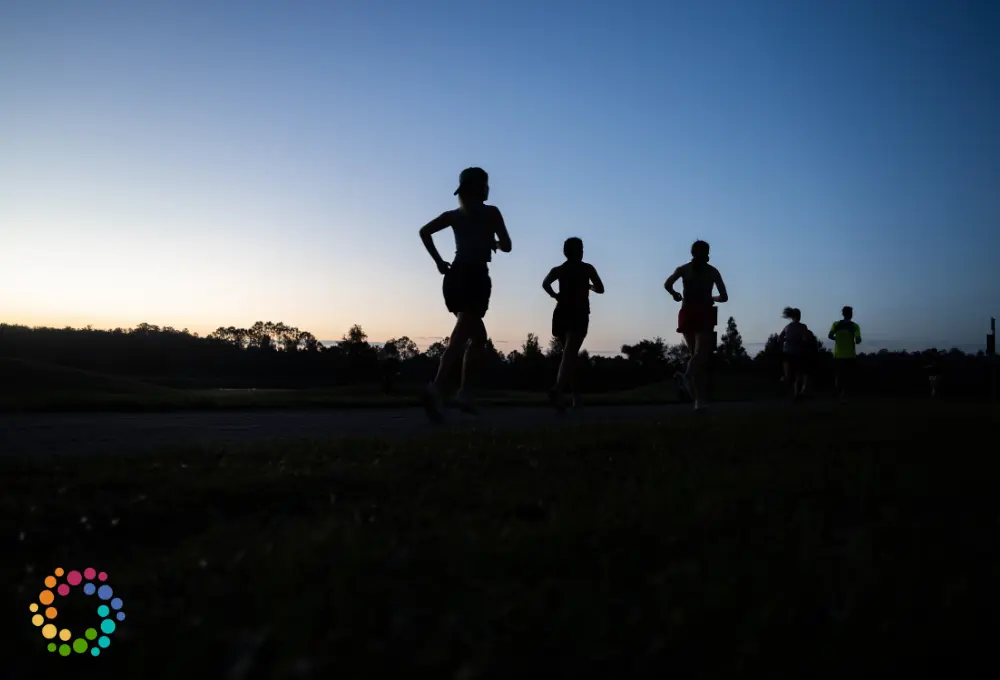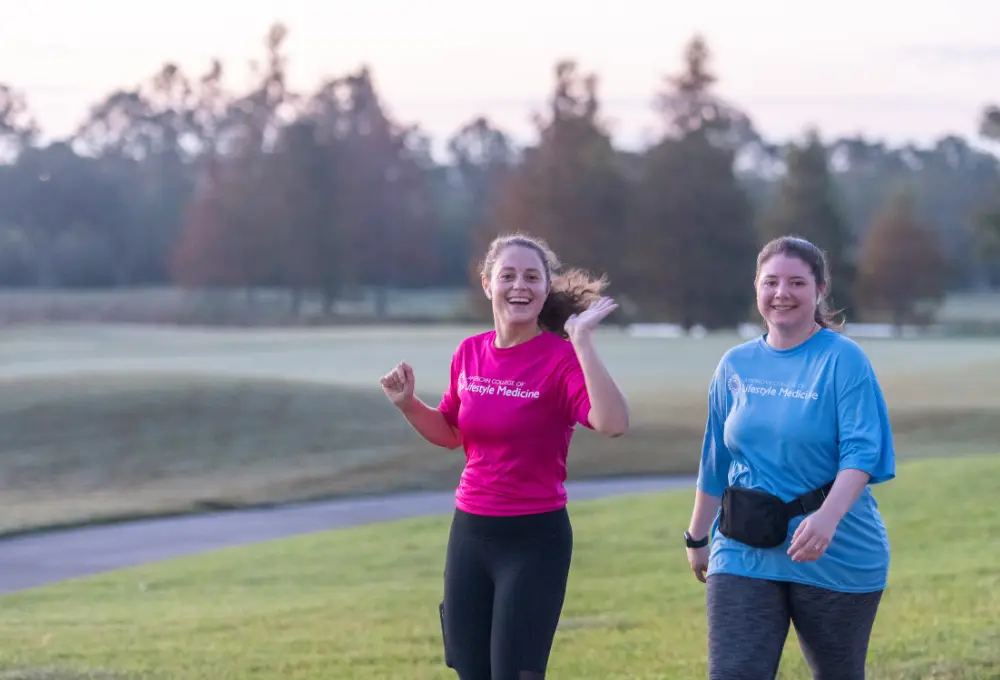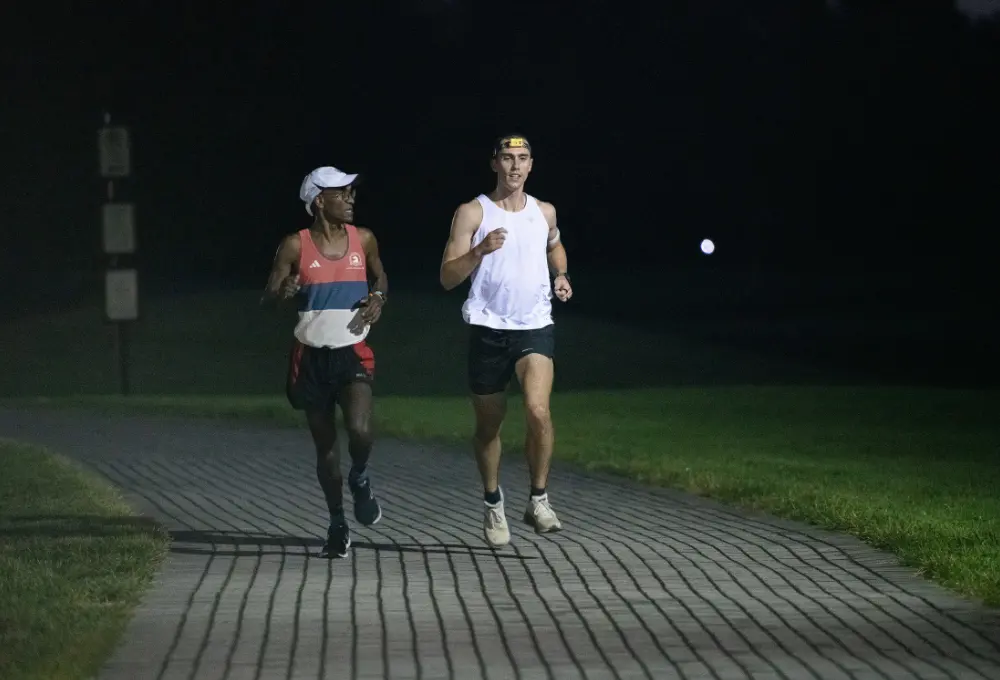How to use physical activity to address unhealthy stress
Stress is an unavoidable part of life that can negatively impact health. But helping patients increase their physical activity can reduce harmful effects and improve resilience. May is National Physical Fitness & Sports Month.
By Divya Hedgren, MD, DipABLM
May 8, 2025

Physical activity is foundational to good health—physically, cognitively, mentally, and socially. It can serve as both a preventive and active management tool for chronic diseases, negative stress response, and mental health, as well as for maintaining a strong connection with the community.
A reciprocal relationship exists between physical activity and stress. While individuals who experience chronic stress levels are more inactive, physical activity is a known intervention for the management of stress.
Stressors are an everyday part of our lives that cannot be avoided, and stress is a natural response to change. The World Health Organization defines stress as “a state of worry or mental tension caused by a difficult situation. Stress is a natural human response that prompts us to address challenges and threats in our lives.” Stressors are varied, ranging from positive to negative, acute to acute/episodic, chronic, and mild to severe. Also, stressors can be categorized as environmental, psychological, physical, and/or traumatic.

How our bodies respond to stress
When stress occurs, the brain and body respond. Sometimes the response is positive, alerting the individual to be motivated and energized with positive emotion and mood. Other times, the response crosses a threshold becoming distressing, with physical manifestations such as headaches, gastrointestinal symptoms, heart palpitations, or sleep disruptions, or rises to the degree of being a significant risk factor for the development of mental health conditions such as anxiety and depression.
Physiologically, the stress response occurs mainly as a function of the sympathetic nervous system (SNS) and hypothalamic-pituitary-adrenal (HPA) axis. The instinctive, acute response occurs through the sympathetic nervous systems pathway, culminating into elevated heart and respiratory rate. The chronic response occurs through the HPA axis pathway triggering corticotropin releasing hormone (CRH) from the hypothalamus, then release of adrenocorticotropic hormone (ACTH) from the anterior pituitary, followed by release of cortisol, our “stress hormone” from the adrenal gland. Over time this can result in maladaptive changes, such as elevation in glucose, increase in sodium retention, and increase in immune suppression.
The impact of physical activity on stress
On a positive note, through hormonal responses, regular physical activity buffers the chronic negative impact of stress and boosts resilience when faced with both psychological and physical stressors. When a person is more physically fit (aerobic), there is blunting of the responses through the HPA axis (lower cortisol response to stress) and optimization of the sympathetic nervous system (more rapid recovery when encountering stress). These effects contribute to a more positive emotional response and mood. Also, physical activity promotes an anti-inflammatory state and growth factor production influencing neuroplasticity and neurogenesis. More immediate exercise effects occur through release of hormones in the endocannabinoid system. Typically, regular activity contributes to better sleep, which helps maintain energy, alertness, and positive mood. In addition, there is a growing and promising body of research related to the benefits of strength/resistance training as a tool for management of stress, depression, and anxiety, but more conclusive evidence is needed to fully understand this relationship. Mind-body practices including yoga and tai chi focus on balance, flexibility, meditative movements, and breathing regulation, which can foster relaxation and stress reduction.
Other beneficial psychological aspects of regular physical activity include experiencing a greater sense of self-esteem and competency through the progress made in stamina, endurance, function, quality of life, and chronic disease management.
How physical activity affects anxiety and depression
Similar to stress, there is a bidirectional relationship between physical activity and anxiety and depression, with these mental health conditions contributing to inactivity, and physical activity reducing risk of symptom onset and improving active symptoms.
Authors of this overview of systematic reviews report that exercise improves symptoms related to psychological distress, anxiety, and depression and should be a mainstay part of the treatment plan for these situations and conditions. Similarly, this meta-analysis published in JAMA in 2024 revealed a variety of exercise from low- to high-intensity aerobic and resistance training may reduce depressive symptoms, with more intense activity leading to greater symptom relief. In addition, physical activity has been found to be a protective factor for the development of anxiety and depression. In a 2018 meta analysis that included 49 prospective cohort studies, the authors concluded that higher levels of physical activity reduced incidence of depression across ages and geographical locations but an optimal dose of activity level was not established.
How to assess a patient’s physical activity
Physical activity is an important lifestyle medicine vital sign. The Physical Activity Vital Sign (PAVS) resource from the American College of Sports Medicine is quick and easy to use and details the recommendations for adults for cardiovascular and strength training. The questions relate to type, frequency, intensity, and duration of the activity.
Potential questions to ask patients during physical activity assessment:
- Solution-focused: If the patient reports no recent physical activity, explore if they have been physically active in the past and ask what activities they performed, the benefits experienced, and what led to a disruption in their routine. You could say “Tell me about a time when you were moving more. What were you doing differently at that time? What led to getting off track?”
- Qualitative assessment: “How do you move naturally throughout your day? Do you notice a change in your energy on days you move more compared to when you move less? What kind of physical activity do you enjoy?”
- Motivation/willingness assessment: “Are you interested in learning more about a physical activity plan? How confident are you in a plan to be more physically active?”
- Barriers assessment: “What concerns or fears do you have about becoming more physically active?” Some patients fear falls/injury or symptom intolerance requiring further discussion and possible referrals, such as physical therapy.
How to engage in physical activity conversations with patients
When engaging your patient in conversations about physical activity, it is important to provide education about the national physical activity guidelines, emphasize incremental benefits with any type/amount of physical activity, highlight that activity can be spread throughout the day to fit one’s schedule, and caution about possible risks with initiating a new activity routine.
Then play the role of coach. The topic of exercise can be daunting for some individuals due to sensitivity around current sedentary lifestyle, physical conditions interfering with activity performance, and time/financial/social barriers. A non-judgmental approach that displays genuine interest, empathy, positivity and focus on strengths can go a long way.
Discussions about core values, purpose and mindset as it relates to your patient’s health and wellness can help in the process of setting goals and plans for increasing physical activity. James Clear, the author of “Atomic Habits” provides a list of core values here. Explore with patients how physical activity aligns with their core values. Ask “What is your ‘why’ to getting healthy and moving more?” For example, perhaps your patient’s core value is family, so their reason to exercise more is to stay active and energized to ride bikes with grandkids.
To help patients start and maintain healthy behavior change, encourage patience (good things take time!), self-compassion (aim for progress, not perfection), help-seeking attitude (it’s okay to ask for help), avoidance of comparing to others (focus on you, what is best for your body and schedule and aligns with your values and personal goals), and discovery of joy in every step of the journey (make it fun!).
How to craft a sustainable physical activity plan
There are multiple ways to craft a sustainable physical activity plan. Overarching principles related to sustaining health behavior change are individualizing the plan for the patient based on their physical condition, resources, and psychosocial circumstances, as well as making adjustments along the way to promote success. Also, encourage the patient to choose an activity they enjoy, set doable and safe goals, and start with tiny, stepwise changes, which eventually accumulate to remarkable transformation.

Here are some strategies for crafting a physical activity plan:
- Identify an enjoyable activity
- SMART goals help to clarify and structure goals: Specific, Measurable, Attainable, Relevant, Time-bound.
- The 5W’s1H approach is easy to remember, integrates your patient’s core values, and helps address potential barriers: What activity? When? Where? Who will join in the activity or be a support for the patient? Why [alignment with core value]? How long [duration]?
- BJ Fogg PhD’s Tiny Habits method proposes of linking a new physical activity habit to a current automated habit. For example: “After I brush my teeth, I will do a full body stretch.” The template is “After I _________, I will __________.”
- Calendars, tracking apps, alarms, and physical/environmental reminders can help. Posting a schedule/calendar in plain sight, preparing for physical activity ahead of time by keeping socks and sneakers by the door or setting out workout clothes ahead of time are a few ideas.
- Access physical activity resources. What do you need to start your plan, such as appropriate shoes, a yoga mat, transportation, etc?
- Moving with a friend or a social group can help provide motivation and accountability. Assist the patient in identifying their support network who will encourage sticking to the plan.
- Offer positive feedback to your patient for any progress made and their strengths in the process, and encourage them to celebrate and reward themselves for their efforts.
About the author
Divya Hedgren, MD, DipABLM
Divya Hedgren, MD, DipABLM, is a board-certified adult and geriatric psychiatrist, and co-creator of the card game “Sync or Swim.” She currently serves as the secretary for the Mental and Behavioral Health Member Interest Group with the American College of Lifestyle Medicine.